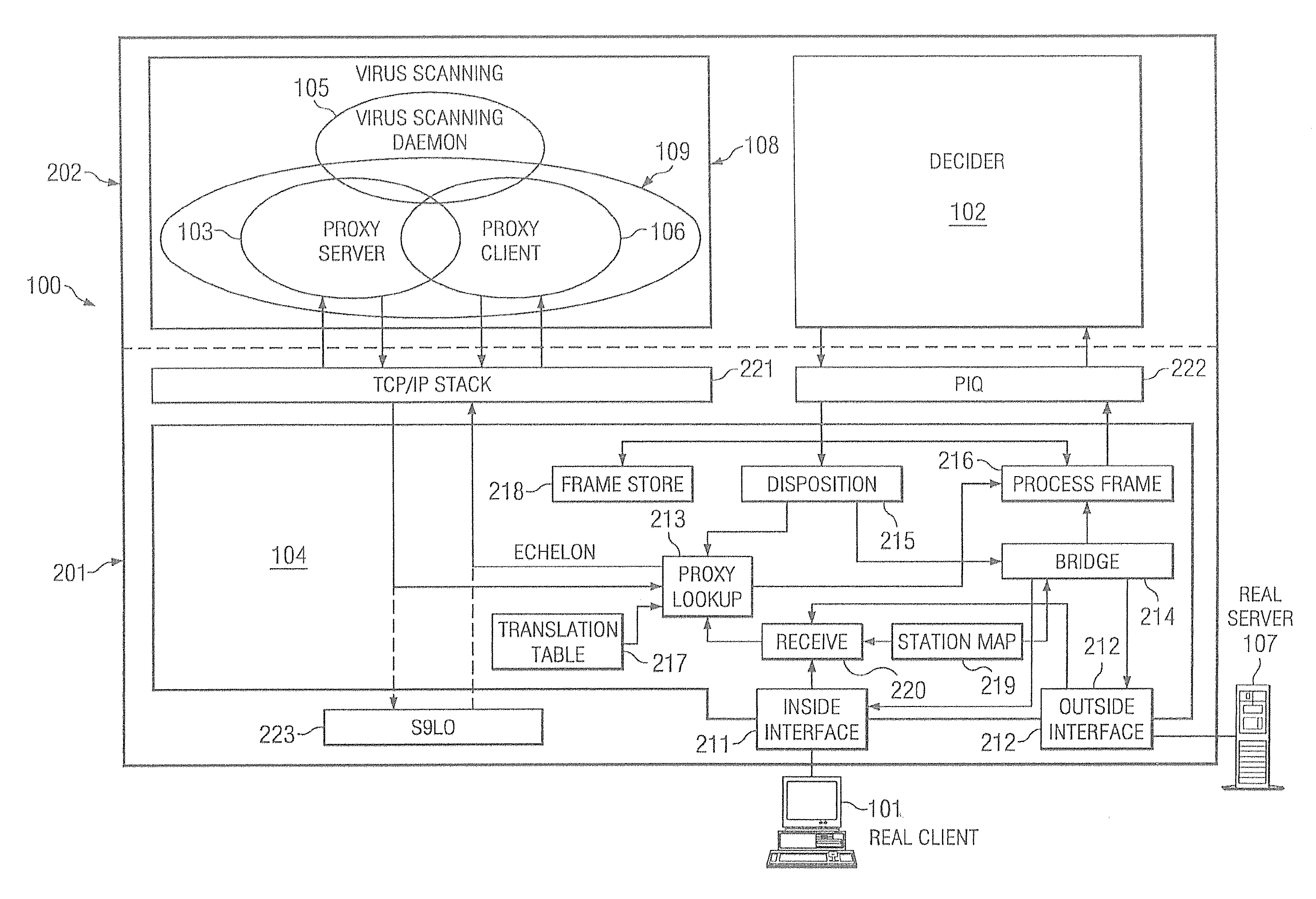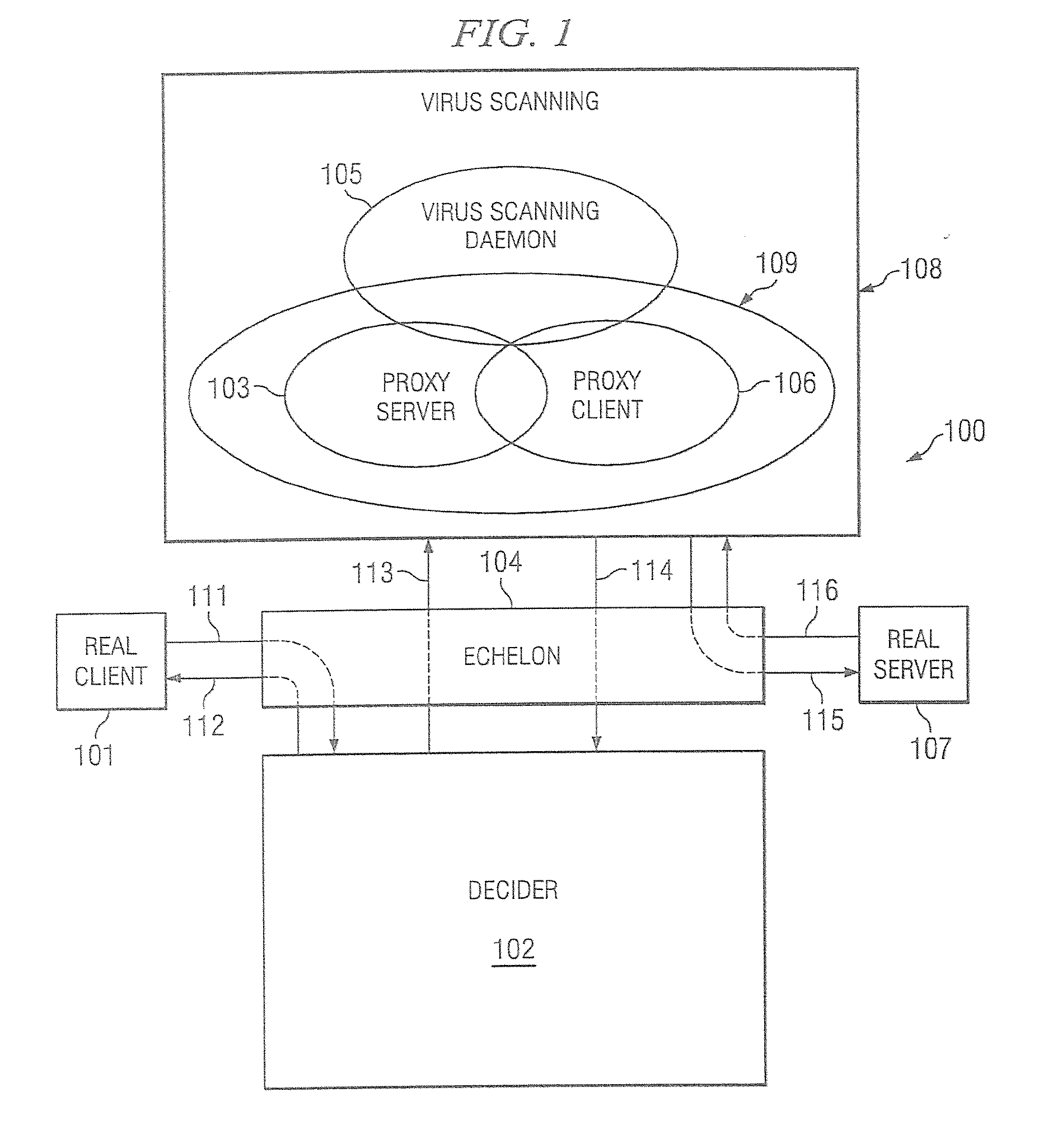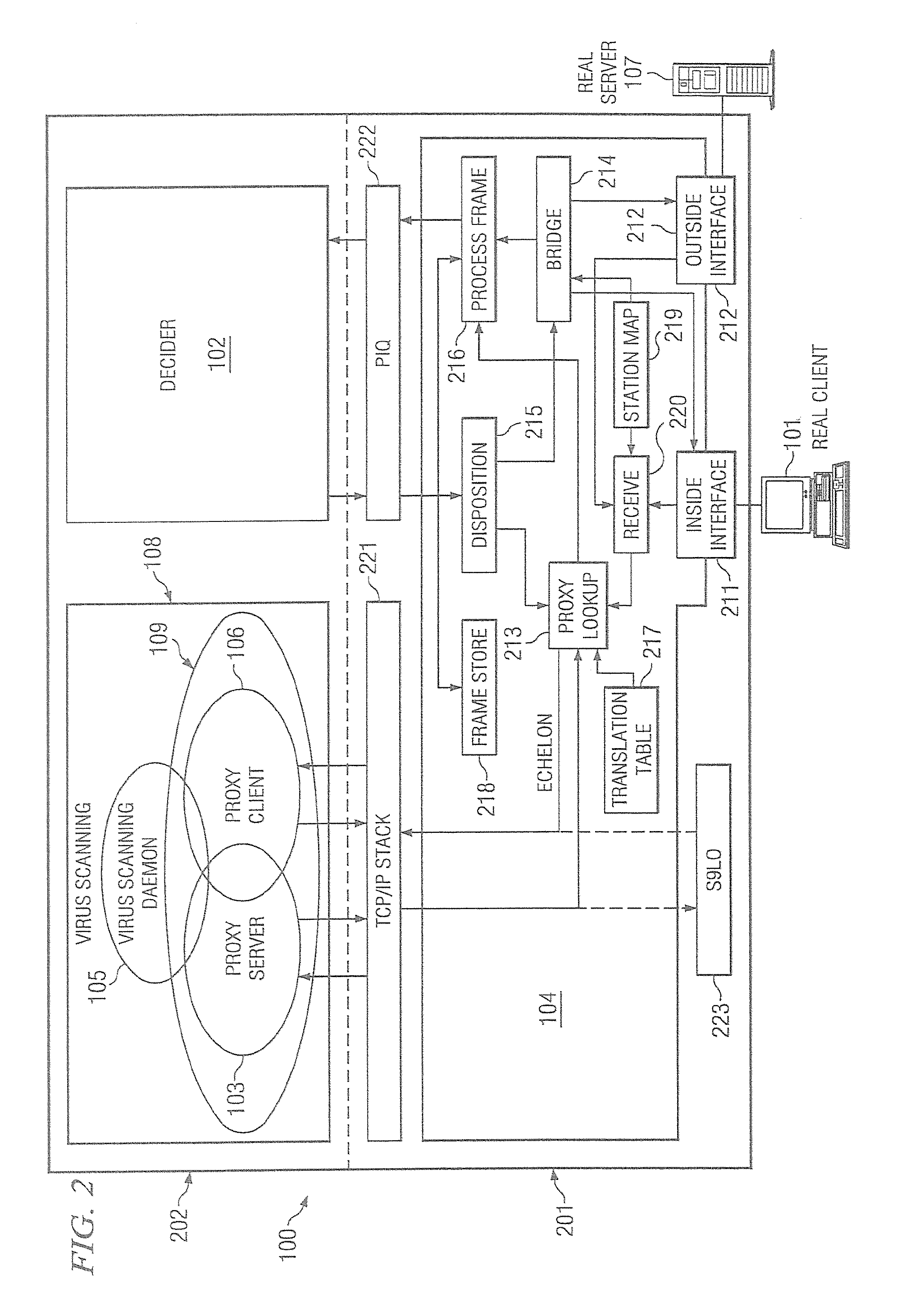System and method for network edge data protection
a data protection and network edge technology, applied in the field of information communication, can solve the problems of system administrators not being able to detect and quickly, the business process is more difficult and time-consuming to implement, and the type of security vulnerability or destructive operation is difficult to detect and implement, so as to facilitate rapid implementation of such functionality
- Summary
- Abstract
- Description
- Claims
- Application Information
AI Technical Summary
Benefits of technology
Problems solved by technology
Method used
Image
Examples
Embodiment Construction
[0027]Directing attention to FIG. 1, system 100 configured according to an embodiment of the present invention is shown. System 100 includes real client 101, such as may comprise an electronic mail client (e.g., OUTLOOK) operable upon a user's PC, and real server 107, such as may comprise an electronic mail server (e.g., EXCHANGE) operable upon a network server, as is well known in the art. Real client 101 represents an actual source or intended destination of an information communication, such as the transmitter of an electronic mail message or a receiver of an electronic mail message. Real server 107 represents an actual server providing information communication services with respect to real client 101, such as an electronic mail server using POP or IMAP mail protocols. Real client 101 may be associated with real server 107, such as comprising a part of a LAN disposed at a business location, or may not be associated with real server 107, such as where real client 101 is transmitt...
PUM
 Login to View More
Login to View More Abstract
Description
Claims
Application Information
 Login to View More
Login to View More - R&D
- Intellectual Property
- Life Sciences
- Materials
- Tech Scout
- Unparalleled Data Quality
- Higher Quality Content
- 60% Fewer Hallucinations
Browse by: Latest US Patents, China's latest patents, Technical Efficacy Thesaurus, Application Domain, Technology Topic, Popular Technical Reports.
© 2025 PatSnap. All rights reserved.Legal|Privacy policy|Modern Slavery Act Transparency Statement|Sitemap|About US| Contact US: help@patsnap.com



